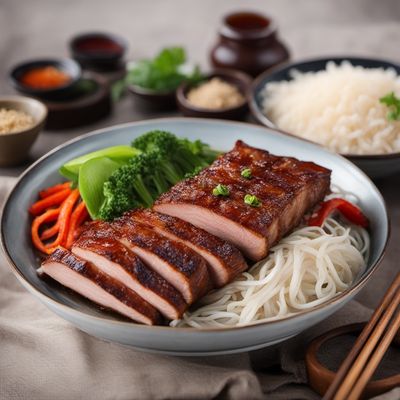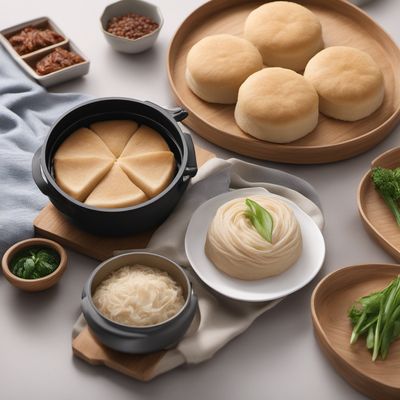
Cuisine
Huaiyang cuisine
Huaiyang cuisine is characterized by its use of fresh ingredients, light seasoning, and meticulous preparation techniques. It is known for its ability to create complex and subtle flavors through careful cooking methods, and its emphasis on the natural flavors of the ingredients. The cuisine is divided into two main styles: Yangzhou style and Zhenjiang style. Yangzhou style is known for its emphasis on sweetness and lightness, while Zhenjiang style is known for its saltiness and umami flavors.
Typical ingredients
Freshwater fish, Seafood, Poultry, Pork, Bamboo shoots, Mushrooms, Soy sauce, Vinegar, Sugar, Shaoxing wine, Ginger, Scallions, Garlic
Presentation and garnishing
Dishes are often presented in a simple and elegant manner, with an emphasis on the natural colors and textures of the ingredients. Garnishes are used sparingly, and are typically simple and understated.
Huaiyang cuisine is also known for its use of Jiangsu cuisine techniques, which emphasize the natural flavors of the ingredients and the use of light seasoning. Many of the dishes are also influenced by the cuisine of neighboring Zhejiang province.
History
Huaiyang cuisine has a long history dating back to the Qin and Han dynasties. It was heavily influenced by the imperial cuisine of the Ming and Qing dynasties, and was further developed during the Republican era. The cuisine is closely tied to the region's geography, with its emphasis on freshwater fish and seafood reflecting the province's location along the Huai River and the coast.
Cultural significance
Huaiyang cuisine is considered one of the most refined and elegant of the eight major Chinese cuisines. It is often served at banquets and formal occasions, and is associated with wealth and status. The cuisine is also closely tied to the region's cultural heritage, with many dishes named after famous landmarks and historical figures.
Health benefits and considerations
Huaiyang cuisine is known for its health benefits, with its emphasis on fresh ingredients and light seasoning. Many of the dishes are low in fat and calories, and are high in protein and vitamins. However, some dishes may be high in sodium or sugar, so it is important to eat them in moderation.
Huaiyang cuisine recipes Browse all »

Huaiyang-style Pork Soup with Rice
Savory Huaiyang Pork Rice Soup: A Taste of Tradition

Huaiyang-style Grapefruit Scallop
Tangy and Tender Huaiyang-style Grapefruit Scallop

Huaiyang-style Onomichi Ramen
Savory Huaiyang Noodle Delight

Huaiyang-style Sausages
Savory Huaiyang Sausage Delight

Huaiyang-style Grilled Pork
Tender and Flavorful Huaiyang Grilled Pork

Huaiyang-style Sweet Soup
Silky Delights: Huaiyang-inspired Sweet Soup

Huaiyang-style Beef Cutlet
Crispy Beef Cutlet with Huaiyang Flair

Huaiyang-style Steamed Bread
Fluffy Clouds: Huaiyang-style Steamed Bread

Huaiyang-style Stippgrütze
Silky Smooth Huaiyang-style Stippgrütze: A Fusion of German and Chinese Flavors

Huaiyang-style Spicy Chicken Stew
Fiery Huaiyang Chicken Delight

Huaiyang-style Bean Sprouts Fried Rice
Crispy Bean Sprouts Fried Rice: A Huaiyang Delight

Huaiyang-style Stuffed Tuna
Silken Tuna Delight: Huaiyang-style Stuffed Tuna